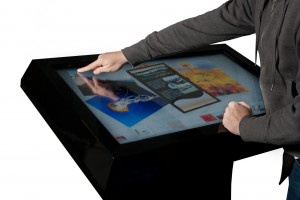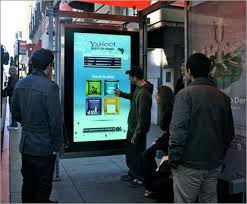Effective Way-finding Digital Signage.
When is a picture worth a thousand words? When it’s an effective way-finding digital signage screen.
Identifying colors and shapes has long been a way of learning and symbols have a universal understanding for safety and emergency procedures; utilising this approach means everyone is included. But it is surprising to look at the statistics and find very few public places actually have any kind of way-finding – electronic or static poster.
In the first instance, planning an electronic way-finding navigation route can overcome physic and logistical problems for visitors. Getting from A to B isn’t always a direct route. Many people use a cognitive or photographic memory recollection to process the information, this is where colors and shapes come in. Being aware of our environment helps us to prepare the route efficiently. One step beyond traditional style of poster way-finding is to use a digital signage screen; a further step is to install a touch-screen digital sign.
How to plan the way-finding digital signage board:
- A floor plan or map, featuring key points and easily recognised features, is a good starting point
- Add outside spaces and external doorways
- Emergency exits and evacuation points
- Toilets and rest rooms, restaurants and ATM’s are aways useful
- Color code areas or zones
- Consider using the virtual way-finding mirrored onto the actual floor – follow the colored lines
- Don’t assume a speed in which people will travel; it is variable according to ability and other factors.
- Consider repeat and regular routes – and short cuts
Being aware of your location and how it relates to where you are currently has a significant outcome for the end result. Getting ‘lost’ in a maze of corridors and T junctions, with closed doors is not only frustrating, but also frightening. And if you are a member of staff, don’t just assume every one (new staff and visitors) knows where they are going. The ability to program the software to run the interactive way-finding digital signage, is unique but elementary to install (for an in-house computer department or external company).
Make a note of how many other buildings and public places use way-finding digital signage screens….Leisure facilities, medical centres, educational campuses and shopping malls…to name but a few.
Being able to give up to date information makes the wayfinding very useful: there may be building work in a particular area, or a hospital ward is closed, so this can be highlighted in ‘real time’. No waiting for a printed alteration, post-it notes over the affected area, or marker pen scribble! Keeping it simple is the key – too much information is hard to retain and process. Also have additional electronic boards in key areas, like additional waiting rooms, foyers and main departments. It can also be a platform for broadcasting local and national news, the weather report and advertisements, which can bring in additional revenue.
A good way-finding screen gives the establishment a positive opinion and if your business relies on positive feed-back then this is for you; at the end of the route people can interact with the screen, leaving a glowing review. Reducing stress, like at an airport, or dentist is essential for reassuring clients and patients into a sense of security and calm, able to face the next stage of their journey.


























